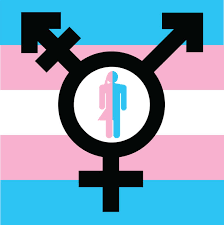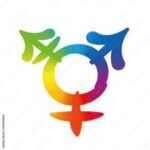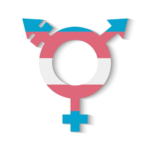In recent years, conversations around gender identity and sexual orientation have become increasingly prominent. However, many still find themselves confused about the distinctions between being transgender and being gay. While both terms are essential in the LGBTQ+ spectrum, they refer to different aspects of identity. This article aims to clarify these concepts, highlight the key differences, and explore the broader context of intersectionality, all while celebrating the vibrant diversity that exists within these communities.
Understanding the Basics: Transgender vs. Gay Explained
At its core, the terms "transgender" and "gay" refer to different aspects of a person’s identity. Being transgender refers to someone whose gender identity differs from the sex they were assigned at birth. This means that a transgender person may identify as male, female, or non-binary, regardless of their biological characteristics. On the other hand, being gay typically refers to a person who is attracted to individuals of the same gender. For instance, a gay man is attracted to other men, while a gay woman (often referred to as a lesbian) is attracted to women.Low Estrogen Levels SymptomsPills That Have EstrogenOral Estrogen Side Effects
Understanding these definitions is crucial for fostering informed discussions around gender and sexuality. It’s essential to recognize that one is related to gender identity (transgender) and the other to sexual orientation (gay). This differentiation is foundational for appreciating the diverse tapestries of experiences and identities within the LGBTQ+ community.
What Does Being Transgender Really Mean?
Being transgender is about more than just the physical aspect of transitioning; it’s fundamentally linked to one’s personal experience of their gender. Many transgender individuals may choose to undergo medical procedures, such as hormone therapy or surgery, to align their physical appearance with their gender identity, but this isn’t a requirement to be considered transgender. It’s crucial to respect each person’s unique journey and understanding of their gender identity.
Moreover, the experience of being transgender can vary widely from person to person. Some may identify as male or female, while others may identify as non-binary, genderqueer, or another identity that doesn’t fit within the traditional binary understanding of gender. The key takeaway here is that being transgender is about self-identification and personal truth, rather than a strict set of criteria or expectations.
The Scoop on Being Gay: It’s More Than Just Sexuality
Being gay delves beyond a simple attraction to the same gender; it encompasses emotional, romantic, and even social dimensions. For many, being gay is an integral part of who they are, affecting their relationships and social interactions. It can influence how they navigate the world and the connections they form with others. Many gay individuals also face societal challenges, including stigma or discrimination, which can shape their experiences.
Furthermore, the gay community is rich with diversity. Just like any other group, there are a variety of expressions and identities within it. For example, a person may identify as bisexual, pansexual, or queer, which adds layers to how they experience love and attraction. Understanding that being gay is about deeper connections, emotional bonds, and shared experiences can help to enrich the conversation around sexual orientation.
Key Differences Between Transgender and Gay Identities
The primary difference between transgender and gay identities lies in the distinction between gender identity and sexual orientation. Gender identity refers to how individuals perceive themselves and their gender, while sexual orientation refers to who they are attracted to. A transgender person may identify as male or female and may be attracted to individuals of any gender, just as a cisgender gay person (someone whose gender identity aligns with their assigned sex at birth) is attracted to individuals of the same gender.
This means that someone can be transgender and gay simultaneously. For example, a transgender woman (assigned male at birth but identifies as female) might be attracted to women and therefore identifies as a gay woman. This intersection illustrates how complex and fluid gender and sexual identities can be, emphasizing the importance of understanding both concepts to appreciate the diverse experiences within the LGBTQ+ community.
Common Misconceptions: Separating Fact from Fiction
There are numerous misconceptions about what it means to be transgender or gay, and these can lead to misunderstanding and stigma. For instance, a common myth is that being transgender is a phase or a trend, rather than a valid and recognized identity. This misconception undermines the experiences of those who identify as transgender, disregarding their feelings and realities. It’s essential to approach these topics with empathy and an eagerness to learn.
Similarly, people often reduce being gay to mere sexual behavior, overlooking the emotional and relational aspects of gay identities. This can lead to the notion that gay individuals are only defined by their attractions, not by their personalities, interests, or life experiences. Addressing these misconceptions is vital for creating a more inclusive and respectful society for everyone, regardless of their gender identity or sexual orientation.
Intersectionality: How Gender and Sexuality Overlap
Intersectionality is a term that describes how different aspects of a person’s identity—such as race, gender, sexuality, and socioeconomic status—interact and shape their experiences. In the context of transgender and gay identities, intersectionality helps us understand that these aspects are not isolated. For example, a Black transgender woman may face unique challenges that differ from those of a White gay man due to the intersecting impacts of race and gender identity.
Recognizing intersectionality is important not just for individual understanding, but also for the larger LGBTQ+ movement. Advocates must consider the diverse experiences and challenges faced by marginalized groups within these communities, working toward inclusive solutions that support everyone. When discussing gender and sexuality, it’s essential to acknowledge how these identities overlap and influence each other.
Celebrating Diversity: The Spectrum of Gender and Sexuality
The LGBTQ+ community is a vibrant tapestry of identities, and it’s crucial to celebrate this diversity. From transgender individuals who challenge traditional notions of gender to gay people who navigate the complexities of attraction, each story adds richness to our collective experience. This diversity fosters creativity, empathy, and understanding, encouraging everyone to embrace their authentic selves.
Moreover, this spectrum of gender and sexuality is fluid and ever-evolving. New terms and identities continue to emerge as society progresses and understands more about human experience. By respecting and acknowledging this diversity, we can create a more inclusive community where everyone feels valued and understood, regardless of their identities.
Why Education Matters: Supporting Trans and Gay Communities
Education plays a vital role in fostering acceptance and understanding of transgender and gay individuals. By informing ourselves and others about various identities, we can dismantle harmful stereotypes and reduce stigma. Educational initiatives in schools, workplaces, and communities can help to create safe spaces where people can express themselves without fear of judgment or discrimination.
Furthermore, supporting transgender and gay communities involves advocating for their rights and visibility. This can mean everything from supporting inclusive policies to amplifying the voices of marginalized individuals. When we educate ourselves and others, we contribute to a culture of empathy and acceptance, paving the way for a more equitable society for all.
In summary, while transgender identities and gay orientations represent different aspects of the LGBTQ+ spectrum, they share the common goal of seeking acceptance, understanding, and love. By educating ourselves about the distinctions and intersections between these identities, we foster a more inclusive society that celebrates diversity and individuality. Let’s continue the conversation, support one another, and embrace the beautiful spectrum of human experience that encompasses both gender and sexuality.


